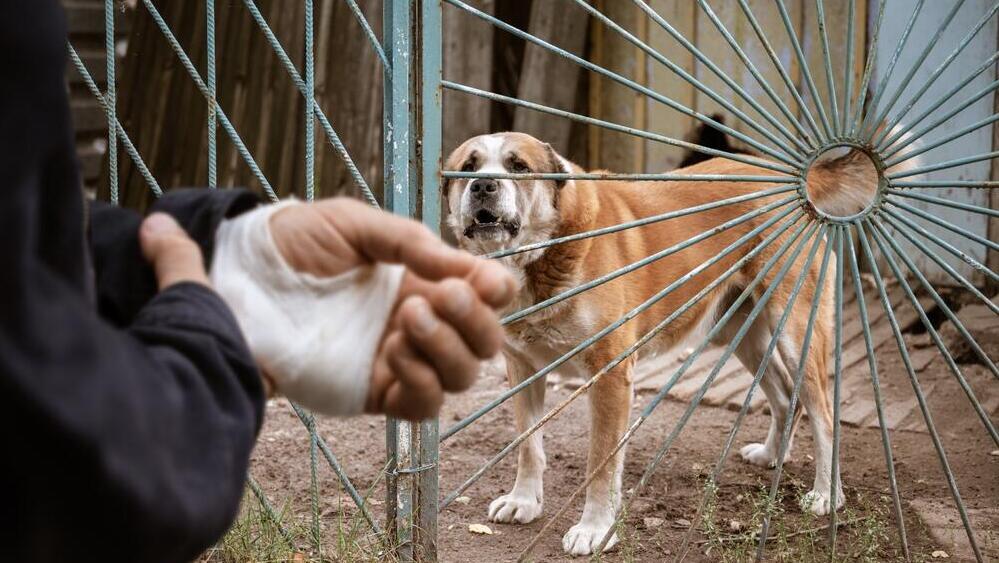Getting your Trinity Audio player ready...
A 77-year-old man from northern Israel contracted rabies on Sunday after being bitten by a dog. While such cases are rare, the incident highlighted the danger of the disease. “The last time we encountered a rabies patient was eight years ago when a foreign worker arrived already infected,” Dr. Bibiana Hazan, head of Emek Medical Center’s infectious diseases unit, told Ynet.
“The previous case before that was in 2003. Seeing a case like this happens once every twenty years — it’s extremely rare,” she added.
Dr. Hazan noted that rabies is a fatal disease with a 99% mortality rate. “Only about 30 people out of millions who’ve contracted it have survived. Surviving is a reason for a case report publication.” The man, a shepherd in the Nazareth area, was referred to the Health Ministry after being bitten.
As standard protocol, the dog was placed in a ten-day quarantine during which the Health Ministry monitored it. According to global protocol, the dog can be released if it doesn’t die after ten days due to the disease and the man wasn’t referred for vaccination. It was later discovered, however, that he had contracted rabies.
Dr. Hazan explained that the patient, admitted to the hospital a few days ago, is in intensive care, being sedated and ventilated. “He arrived with difficulty swallowing, weight loss, and later, personality and behavioral changes — neurological symptoms consistent with rabies. It’s a challenging diagnosis, requiring multiple blood, spinal fluid and skin biopsy samples.”
“Everything was sent to the veterinary institute and they began testing immediately. we received the final confirmation on Sunday. The patient had already begun targeted treatment for the disease before the diagnosis,” she added.
 Dr. Bibiana HazanPhoto: Courtesy
Dr. Bibiana HazanPhoto: CourtesyDr. Hazan explained that rabies is almost always transmitted through the bite of an animal. “It’s nearly always from mammals — dogs, cats, cows, horses, bats, jackals and foxes — that the virus passes to humans. Rabies’ initial symptoms of are very similar to the flu: general fatigue or discomfort, fever, accompanied by pain or headaches.”
“There may also be an unusual tingling or burning sensation near the bite site. Later, anxiety, confusion, hallucinations and ultimately paralysis of the respiratory muscles and inevitable death follow,” she said.
She added that the disease’s incubation period — the time from virus infection to symptom onset — can range from a week to a year, usually lasting between one and three months after the bite.
“The farther the bite is from the head, the longer it takes the virus to reach the brain. In other words, the farther from the head, the longer the incubation period. The virus progresses through the nervous system at about a centimeter per day.”
Once the virus enters the body, it moves into the muscle, advancing slowly up the nervous system toward the brain. This incubation period, during which no symptoms appear in the bitten individual, continues until the virus reaches the brain.
Infected animals or people are known as carriers. When the rabies virus reaches the brain it spreads quickly, dissolving entire brain regions and ultimately causing death.
Dr. Hazan explained that caution is crucial and anyone who’s been bitten must contact the Health Ministry. “The person needs to reach out even if the bite took place weeks or months ago and wasn’t reported, as the Health Ministry decides who requires vaccination.
“Since this is a deadly disease, caution is essential. Although human-to-human transmission is nearly nonexistent, anyone exposed to an animal bite should seek vaccination,” she said.
If concern about rabies exposure is raised, passive immunization is given to prevent the development of the disease. “Passive immunization contains ready-made antibodies, administered when immediate treatment is needed, as the body can’t wait to produce its own antibodies.”
“Passive immunization isn’t a treatment for rabies and doesn’t offer protection once symptoms have appeared. It consists of four intramuscular injections, with the first administered as close to the bite as possible, followed by three more on days 3, 7, and 14 following the initial shot,” Dr. Hazan explained.
“It’s necessary to check the tetanus vaccination status in any case of a bite,” she added. “If the last tetanus shot was given more than five years ago, or if the date is unknown, a booster dose is required.”
Get the Ynetnews app on your smartphone:




